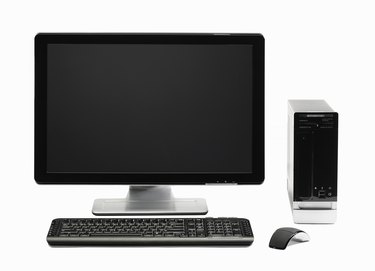
The FSB speed of a CPU, which translates into the "front side bus" speed of a "central processing unit," is the speed at which data is processed in a computer. Most motherboards nowadays have FSB speeds around 1,066 Mhz or 1,333 Mhz. The front side bus is the controller that processes data from the CPU to "the northbridge" (memory controller hub) of the motherboard, which then gathers all the information from the components connected to the motherboard for use in the computer. The speed of the processor (CPU), when it is not processing data through its cache memory, is always going to be the same as the speed of the front side bus, even if the processor speed is rated at 3 Ghz and the FSB speed is rated at 1 Ghz.
Check the FSB Speed Through the BIOS
Video of the Day
Step 1
Turn on your computer and wait for the boot screen to show up. The boot screen is the screen (in black and white color) that lists all the components in your computer. Press "F1" or "Delete" (depending on your motherboard manufacturer) to access the BIOS. The BIOS is like the "control panel" of the motherboard. If the screen does not appear after you turn on your computer, press "F1" or "Delete" every second from the moment you press the power button.
Video of the Day
Step 2
Press "Enter" on the "Advanced Chipset Features" in the main menu of the BIOS.
Step 3
Look to the left side of your screen. You will see data such as cache speed, memory speed and others. The top numbers two should give you the CPU core speed, which is the speed of your processor. Right under it is the FSB speed, which is the speed of the front side bus.
Check the FSB Speed Online
Step 1
Go to the motherboard manufacturer's website and type in the model number of your motherboard.
Step 2
Search through the results that you find and locate your motherboard's model.
Step 3
Look for the product description of your motherboard. The FSB speed will be listed in the product description. Check, likewise, for the CPU speed.